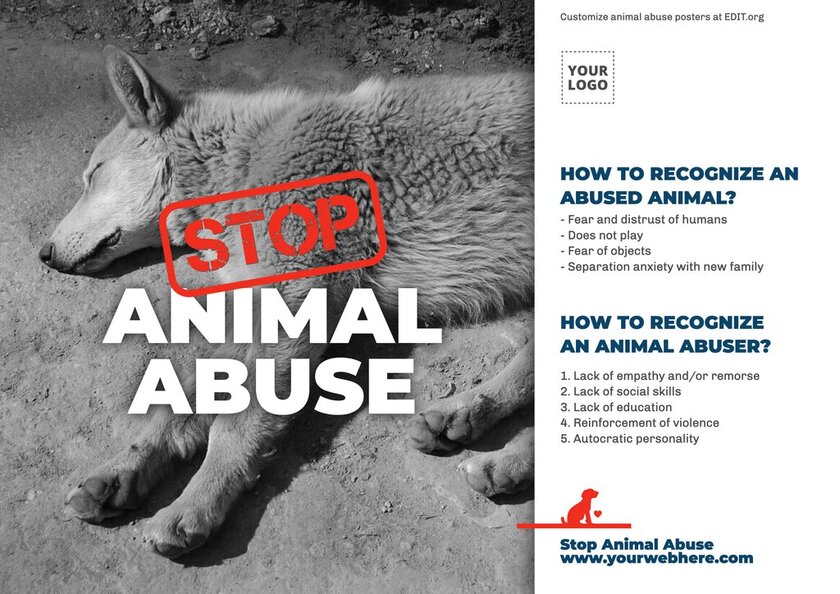Animal abuse remains a pervasive issue in modern society, often cloaked in ignorance or indifference. As advocates for these silent creatures, it is essential to navigate the intricate web of arguments against animal cruelty to illuminate the gravity of this problem and enact meaningful change. This essay delves into powerful arguments against animal abuse, elucidating how each can be utilized effectively in advocacy efforts.
One compelling argument against animal abuse is rooted in ethical considerations. The capacity for sentience—the ability to experience pleasure and pain—is not exclusive to humans. Animals, too, exhibit complex emotional responses, establishing a moral foundation for their protection. Using philosophical frameworks, such as utilitarianism, advocates can argue that minimizing suffering enhances overall well-being. When presenting these ideas, employing poignant metaphors can be particularly effective. For instance, one might liken the life of an abused animal to a symphony, each note symbolizing its unique experiences, emotions, and pain, ultimately disrupted by the cacophony of human cruelty.
The emotional appeal of this argument does not merely rely on abstract concepts; concrete evidences can bolster it significantly. Scientific studies have demonstrated that animals experience varying degrees of emotions akin to humans. Thus, by illustrating the cognitive and emotional parallels between humans and animals, advocates can craft a compelling narrative that elicits empathy from the audience. By referring to these studies in well-researched presentations, the intellectual rigor can lend credence to the emotional narrative, solidifying the ethical argument.
Another influential argument against animal abuse stems from the societal consequences of such actions. The connection between animal cruelty and broader societal issues is well-documented. For instance, studies indicate a correlation between animal abuse and domestic violence. Using this information, one can articulate that preventing animal abuse is not merely an act of kindness but a societal necessity. Highlighting the implications of cruelty within the context of a larger ethical framework can resonate strongly with audiences concerned about public safety and welfare.
To utilize this argument effectively, advocates may draw upon historical data. Case studies that showcase a pattern of behavior among perpetrators of animal abuse, such as criminal activity or antisocial behavior, can serve as irrefutable evidence of the larger ramifications of neglect and harm. When reporting these statistics, the weaving of narratives about individual cases—transcending figures on a page—creates a poignant appeal, inviting the audience to view the issue through a lens of societal responsibility.
Another layer to this discourse is the discourse surrounding the environmental impact of animal abuse, particularly in the context of factory farming. Intensive animal farming practices often result in severe animal welfare concerns, as well as significant ecological degradation. Arguments emphasizing the sustainability of humane treatment resonate particularly well with environmentally conscious individuals. Here, the metaphor of a fragile ecosystem can be employed—much like an intricate web, each strand contributes to the overall health of the environment. Undermining any part can lead to dire consequences for the whole.
By focusing on the intersection of animal welfare and environmental ethics, advocates can expand their audience. For instance, framing humane treatment of animals as essential for a sustainable future allows for broader engagement from individuals who might otherwise remain indifferent to animal rights issues. Presenting ecological statistics, alongside innovative sustainability solutions, can reinforce the necessity of these arguments. This multifaceted approach not only raises awareness but encourages actionable change for the benefit of all living beings, human and non-human alike.
Furthermore, there exists a legal argument against animal abuse that is often overlooked. Current laws regarding animal welfare vary significantly across regions, leading to discrepancies in protection. Advocates can argue for the need for comprehensive legislative reform. The metaphor of a safety net can serve as a powerful illustration: without a robust legal framework, many animals fall through the cracks, subjected to cruelty without recourse or protection. Attempting to fill these gaps through advocacy and legislative change should be the cornerstone of campaigns aiming to combat cruelty.
This argument becomes increasingly impactful when infused with case studies detailing the effectiveness of animal protection laws in various jurisdictions. Presenting data that correlates strong legislation with decreased instances of animal abuse provides undeniable evidence that reform leads to tangible benefits. Advocates should articulate these connections clearly, emphasizing how public support for legal reform can induce a cultural shift towards greater compassion and humane treatment of animals.
Finally, educating the public serves as an irreplaceable tool in the fight against animal abuse. Awareness campaigns that shine a light on the suffering of abused animals cultivate a societal ethos of empathy and responsibility. Engaging storytelling that captures the reader’s imagination can be a commendable method to inspire change. Here, the metaphor of a candle in darkness becomes relevant—each illuminated story brings hope and awareness, gradually dispelling the shadow of indifference that surrounds animal cruelty.
In conclusion, the arguments against animal abuse encompass ethical, societal, environmental, legal, and educational perspectives. Each argument provides a unique entry point for advocates to engage with diverse audiences. By artfully weaving these strands together, the case against animal cruelty becomes an intricate tapestry of humanity’s moral obligation. To foster compassion and understanding, employing resonant metaphors, compelling narratives, and robust evidence is not only effective but essential for motivating action. In concert, these elements contribute to a holistic strategy that empowers advocates and builds a future where animals are regarded with the dignity they inherently deserve.






